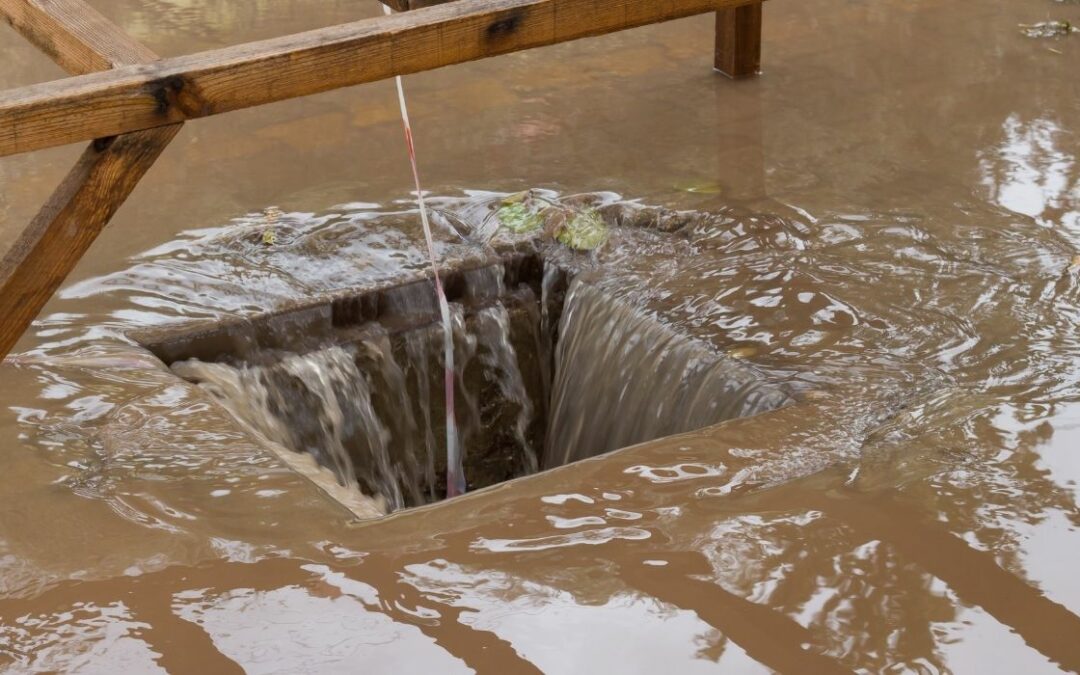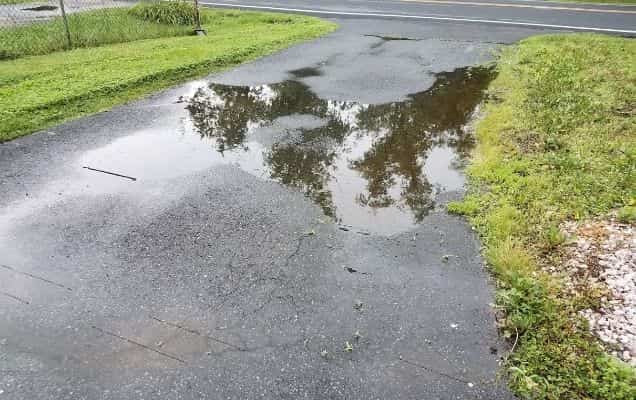Every aspect of driveway construction is crucial to the performance and longevity of the finished work. Excellent materials cannot overcome poor construction just as the best construction technique cannot make poor materials into a great driveway. A crucial factor in success is proper driveway drainage design.
Why Proper Driveway Drainage is Important?
We all know that water infiltration is one of the Big Three enemies of driveway durability along with oxidation from the sun and overloading. Proper driveway drainage can prevent much of the damage that is caused by water, including the devastating effects of freeze and thaw cycles that deform asphalt.
A challenge in driveway drainage design is that so many residential driveways consist of a short span between two unchangeable points: the street and the garage – and you don’t want water to drain into the garage.
In some cases, where the elevation does not change between the driveway entrance and the street, it might be necessary to pitch the asphalt toward the center of the driveway and install a drain at the low point. This consists of a grate connected to solid pipe buried in or under the asphalt that pitches the water away toward the street.
What is the Ideal Driveway Finish?
Ideally, the driveway should grade away from the garage at a 2 to 5 percent pitch. Two percent calculates to one-quarter inch per foot.
In many cases, it is necessary to finish the driveway with a diagonal pitch when it is not possible to slope downward and away from the garage opening.
The diagonal pitch directs water down and across the driveway toward the street. In some cases, a driveway is failing because the land on one side – or both – is pitched to drain excess water onto the driveway. A good approach to solve this problem is to create a grassy swale by grading the land down and away from the driveway edge.
A drainage swale is a gently pitched channel located in the lawn and covered in grass that does not detract from the look of the lawn or disrupt mowing.
What is the best Workaround?
If a swale is not possible, it may be necessary to install drainage pipe along the driveway edge. Perforated PVC pipe is buried at a pitch that carries water away toward the street. The pipe is covered in filter fabric and finished in decorative stone that allows surface water to percolate into the pipes.
In the worst-case scenario, the landscape slopes toward the garage, a sure chance for water to flow down and infiltrate under the garage door. Often, the best solution for this situation is a trench drain or grated drain at the full width of the garage door.
Again, this installation uses a perforated PVC pipe to aim the water to a downward slope. In some cases where the slope is severe, a grated drain is installed where the water falls into a solid pipe below the grate to be carried away.
Conclusion
Drainage solutions are important in the original construction of the driveway, but are equally important as retrofits for driveway maintenance work. When you run across a driveway that is failing because of poor drainage, it may be necessary to explain to the owner why the driveway is failing, and that it will continue to fail until the drainage problems are addressed.




